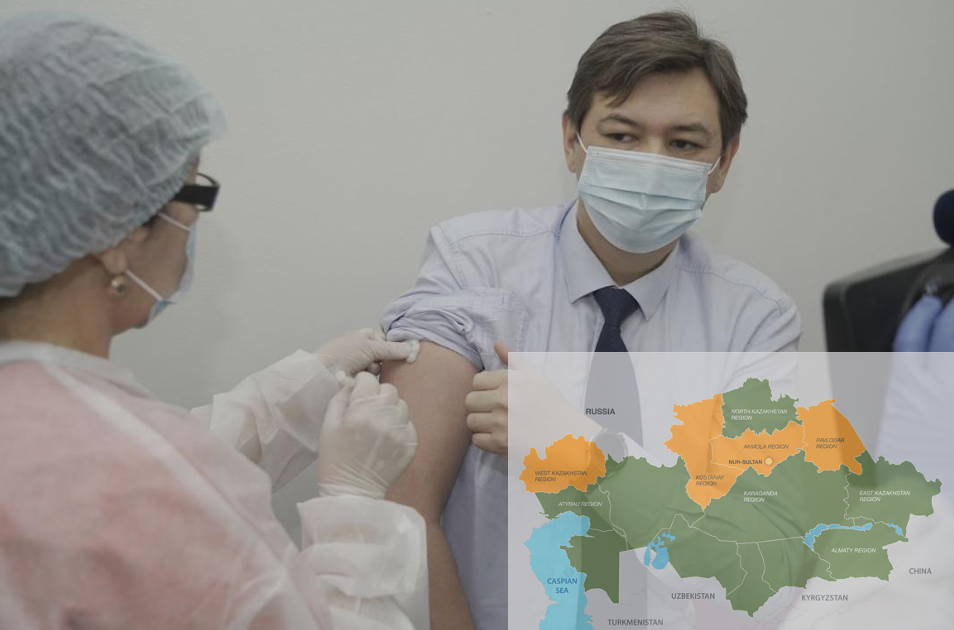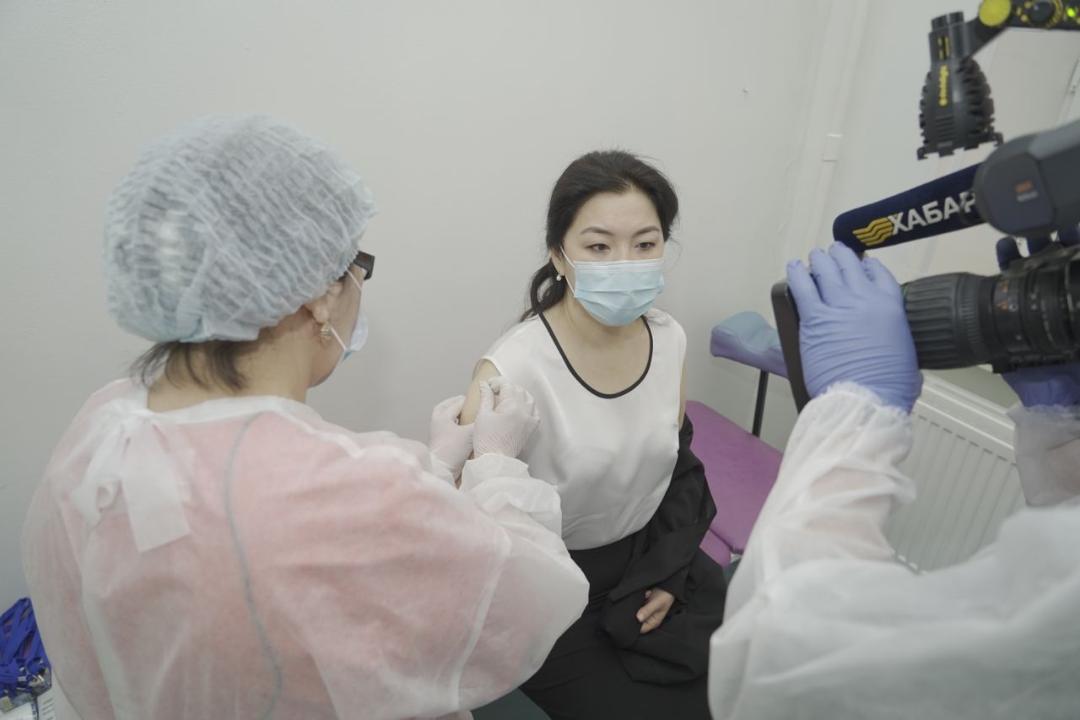NUR-SULTAN – No region in Kazakhstan is currently in the high risk red zone. Only the Kazakh capital of Nur-Sultan, as well as Akmola, Pavlodar, West Kazakhstan, and Kostanai regions are in the moderate risk yellow zone.

Vice Healthcare Minister Yerlan Kiyasov receives his second dose of the vaccine. Photo credit: Kazakh Healthcare Ministry. Click to see the map in full size
All other regions in the country are in the green zone.
“The country’s epidemiological situation has stabilised. Many of our citizens returned to their routine and even forgot about this infection. But as it spreads across the country with 700 to 800 daily cases, mass vaccination is carried out nationwide to stop the spread of the infection,” Kazakh Vice Healthcare Minister Azhar Giniyat said.
As of Feb. 23, Kazakhstan has reported 208,809 coronavirus cases and 2,707 deaths. Since Aug. 1, it has also registered 48,991 coronavirus pneumonia cases that show coronavirus symptoms, but are not clinically confirmed as COVID-19. 613 people died from it.
Overall, 19,764 people in Kazakhstan have received the first dose of vaccine since the mass vaccination campaign began on Feb. 1, said Kazakh Vice Healthcare Minister and the country’s Chief Sanitary Doctor Yerlan Kiyasov.
Along with Kyasov, Azhar Giniyat also received their second dose of vaccine Feb. 22 at a No. 6 hospital in Kazakh capital Nur-Sultan. Both said they felt well.

Ginyat receives her second dose of the Russia jab. Photo credit: Kazakh Healthcare Ministry
Kiyasov said that after receiving the two doses of the vaccine, he feels fully protected from coronavirus. He said the main goal of vaccination is to develop herd immunity, a point when a sufficient proportion of the population is immunised against a virus that it can no longer spread.
The vaccination is being carried out with Russia’s Sputnik V vaccine that is produced at the Karaganda pharmaceutical plant. The plan is to produce 90,000 doses in February, 150,000 doses in March, and 600,000 doses monthly from April to June.
The first supply of the vaccine took place Jan. 31 and was sent to the major hubs of Sk Pharmacy, the country’s single distributor, located in Nur-Sultan, Almaty, Shymkent and Aktobe, and then distributed to the regions.
The first stage of the vaccination targets frontline medical workers at infectious diseases hospitals and ambulance services. Starting March, teachers, professors and security forces will be vaccinated, followed by students, whose vaccination is scheduled for April.


